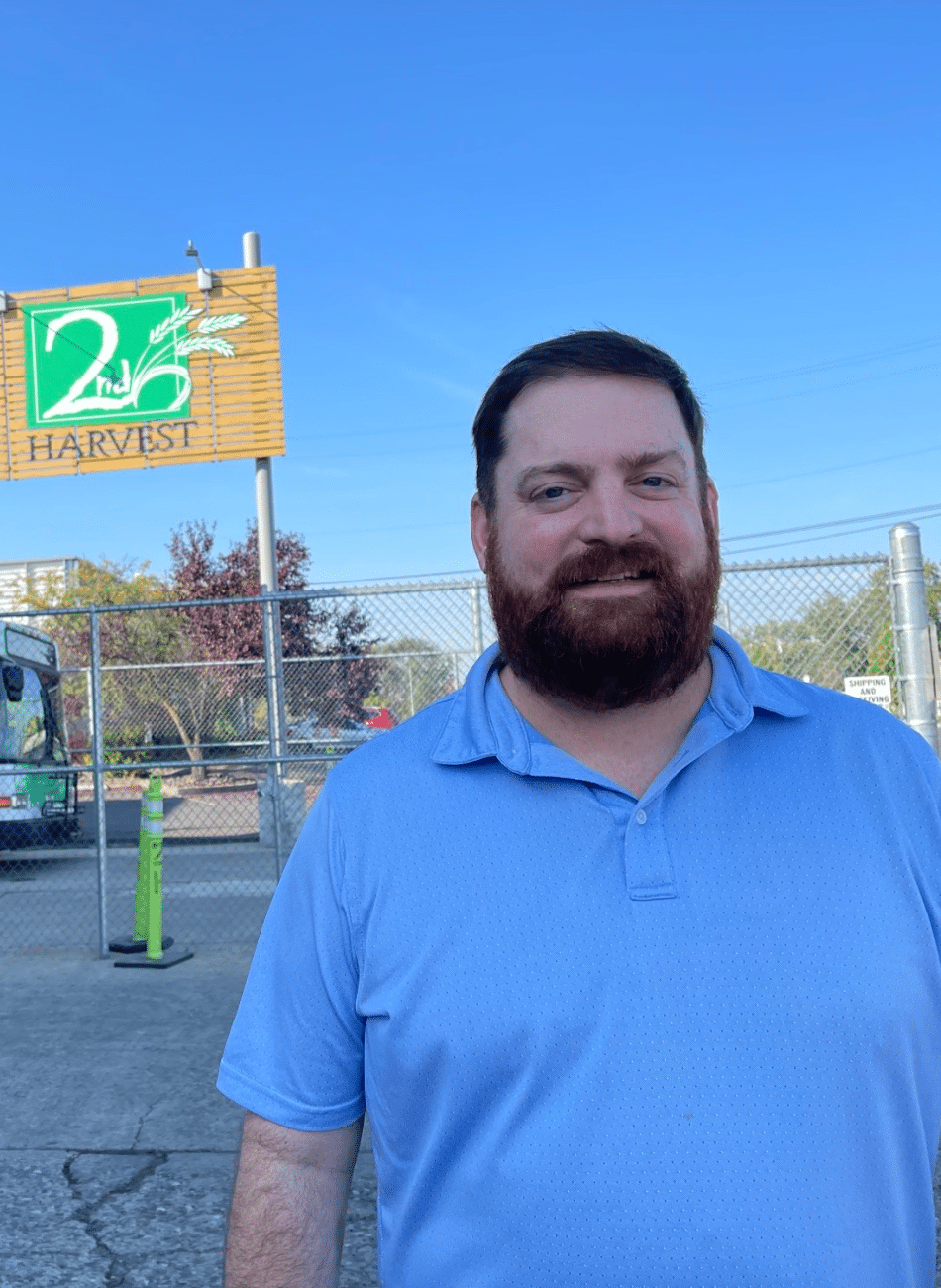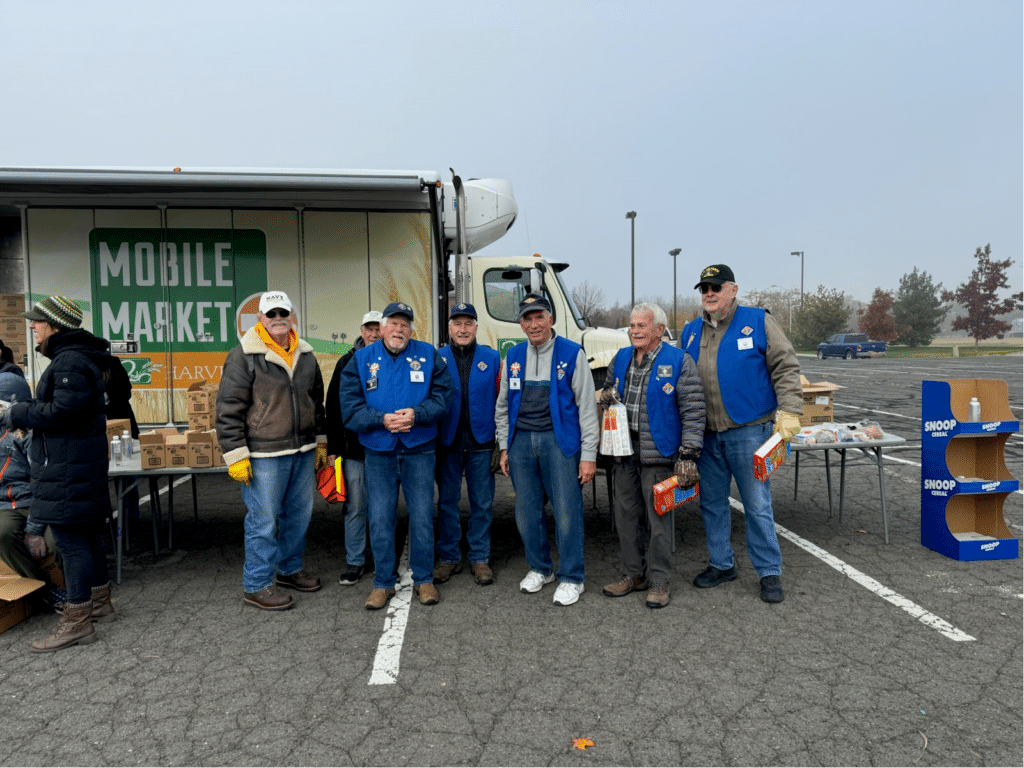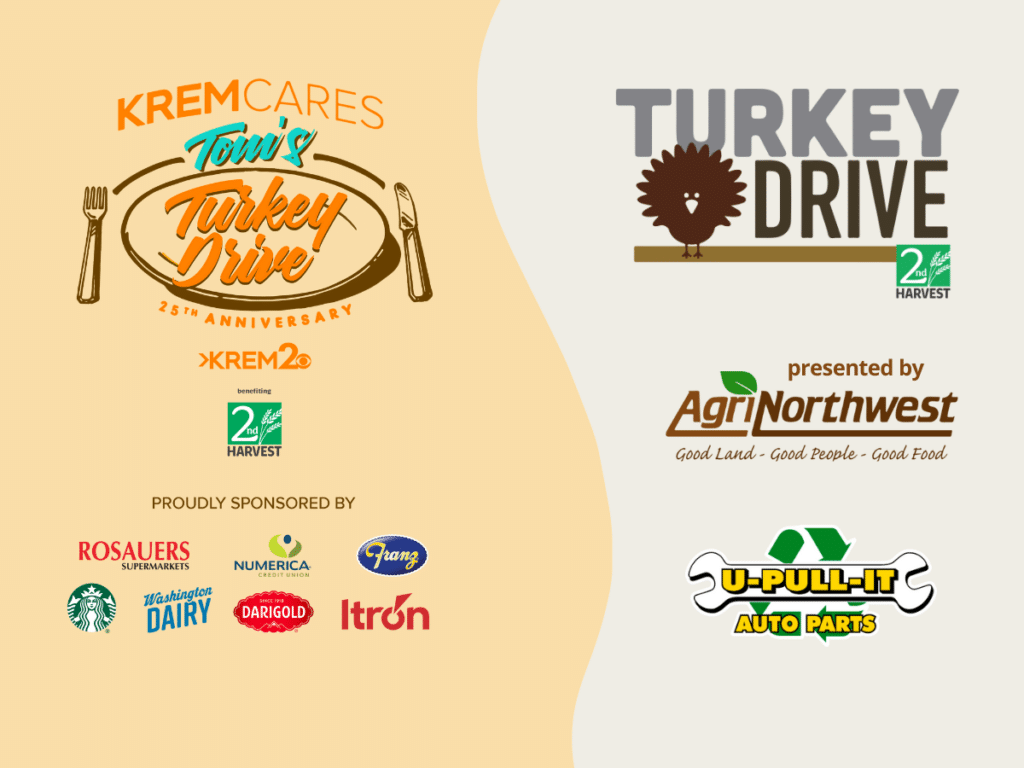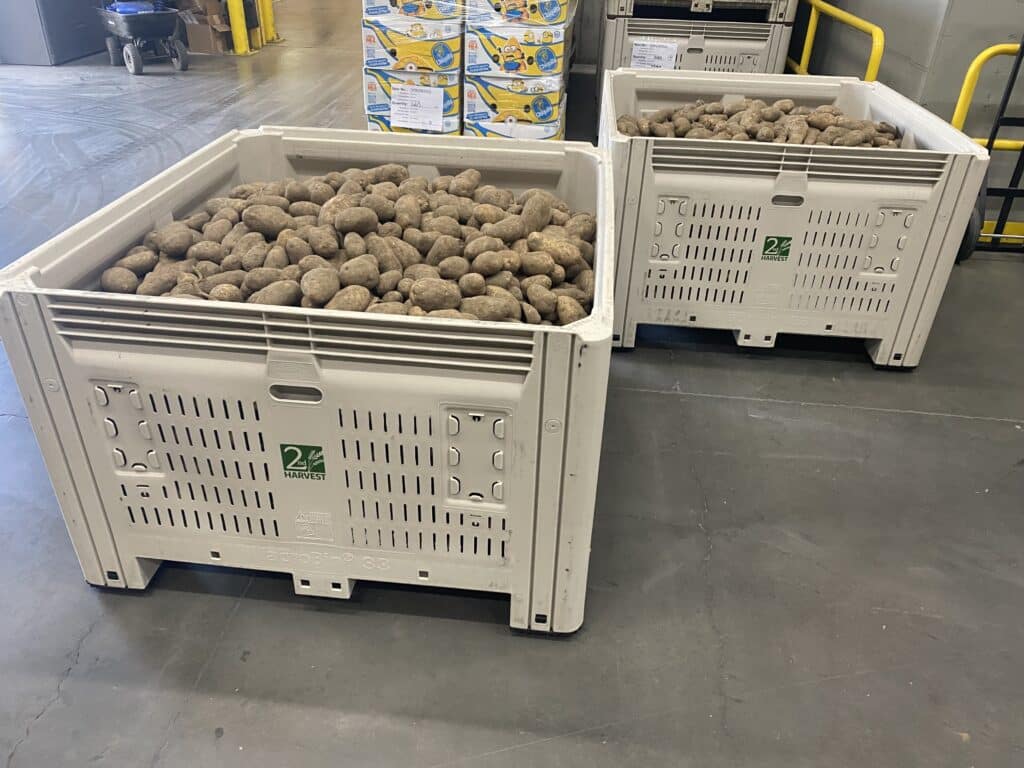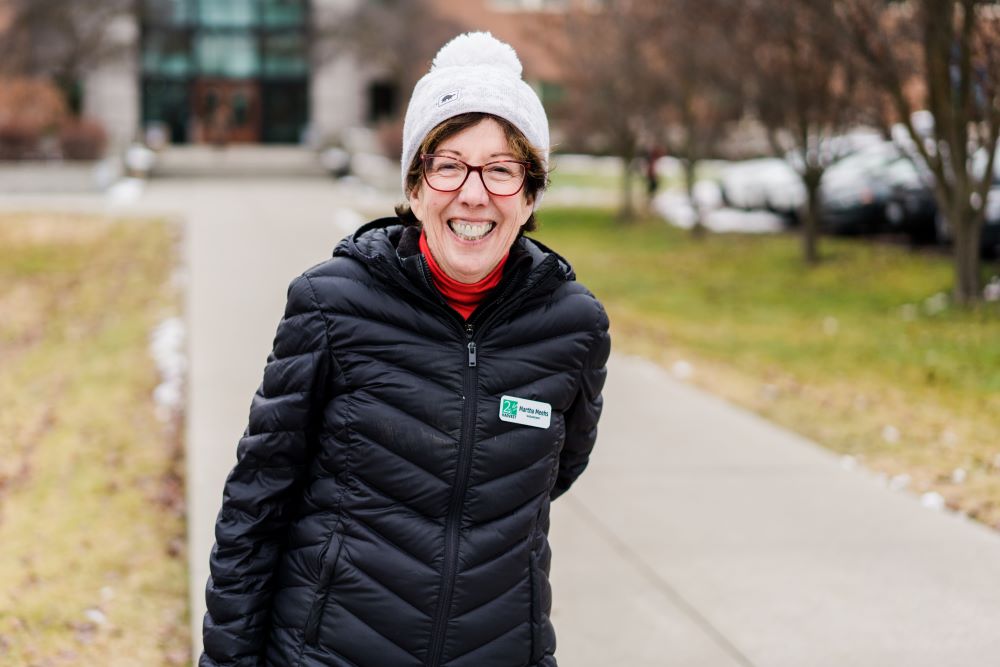Q&A with Feeding America’s Charles Dennis – October 14
As a member of Feeding America, Second Harvest works closely with representatives at the national office to share food resources, data and ideas to better serve people facing hunger in the Inland Northwest.
Last week, Charles Dennis, senior director of member engagement with Feeding America, visited Second Harvest—one of 199 food banks that his team serves. Read on to learn about his role in hunger relief, how lessons learned during the pandemic are making a difference right now and his special thanks for community members who support Second Harvest.
How long have you worked at Feeding America?
Charles: “I’ve worked there 15 years and seven days. Before coming to the national office, I worked at the San Antonio Food Bank, which is in our network, for 5 ½ years.”
Please explain the Feeding America partnership.
Charles: “All of our members have a geographically-specific service area that they cover. And so the member here, Second Harvest, covers the counties in Eastern Washington as well as some in Northern Idaho; so our other 198 food banks have specific counties that they cover in their geographic regions.”
What are the biggest benefits of the partnership?
Charles: “That’s a great question. I think some things we do well as a national office and as a representative of our network is what I like to call ‘national reach with local connection.’ All of our members, while they are separate 501(c)(3)’s, we can kind of aggregate our efforts to national donors like Walmart or national food companies, etc. We can consolidate our voice on advocacy issues at the federal level. Specific to our national office, where we really shine is in some of our advocacy efforts, some food insecurity research and data that we’re able to provide. One of the best aspects of our network is just our sharing and challenges and coordination between members. Our network is very giving and connecting members is always the most effective way to help build capacity, because members share their challenges, their successes and really can kind of brainstorm together.”
How many Feeding America member food banks do you guide?
Charles: “I have 20 in my portfolio that I work with specifically, and so I’m kind of a customer service rep to those 20 members and connect them with other food banks, with resources from the national office, etc. And while it’s not geographically based, nine of those members are in Pennsylvania, two in South Carolina, some in the Midwest and then here in Spokane.”
Which elements of compliance do you oversee in your role with Feeding America?
Charles: “All of our members are separate 501(c)(3) organizations across the country. Part of my job is to ensure compliance with the member contract that binds us as a network, so the compliance pieces in there range from board governance requirements, financial requirements, food safety requirements—really kind of, those three key aspects of our food banks.”
Is there anything that sets Second Harvest apart from other Feeding America members?
Charles: “Yeah, I think one thing you have in common is that it’s very evident that Second Harvest has a great reputation in the community—you’ve built that over years and so that’s always a highlight and something that I immediately see. I think specific to your food bank, your proximity to…all of the agriculture that’s in your area is definitely not something that is common across the country. And so you have your branch in Pasco that is working with farmers and with food companies down there and I think that’s a great asset for your food bank here.”
How does food insecurity impact the communities that you visit?
Charles: “It’s definitely been a challenge, not only because of the pandemic, and that afforded our network the opportunity really to show what we can do when times are the most dire. But I think the challenge for our network going forward is food insecurity has so many direct ties to the economy. One of our last hunger studies said that employment is the number one driver of food insecurity, so I think it’s going to be a challenge for our network to balance between providing food to those that need it and working on different strategies that help people get out of food insecurity.”
What are the biggest lessons learned from the pandemic?
Charles: “I think the most impressive thing is that we were able to aggregate all of the incredible work the members were doing across the country, and we raised over $323 million in the direct response phase of that first year. All the money went back out to the network—there was no percentage taken that they kept at the national office. Two hundred sixty-three million of that was dollars, just pure dollars and then the rest was in food, and transportation (etc.). And we were only able to do that at the national office because of the great reputations, the great work that all of our members were doing across the country. And so while it’s unfortunate that it takes disasters and dire times like that to illustrate that, it still did illustrate that and it’s very inspiring in my opinion to see just all the years of hard work that all of our members have done and being recognized for that, because they do step up when times are most dire.”
How are those lessons shaping Feeding America’s response to the current challenges of increased food insecurity and decreased food supplies?
Charles: “I think we’ve been able to utilize some of the resources that have come in to really focus strategically on building certain areas of capacity for our members, so that they can serve their communities better. Learn more about those who are food insecure, learn more about what their needs are. I think we historically have leaned into kind of the logistical side of just getting in food and getting it out, and I think the pandemic has taught us that there are maybe deeper insights we need to learn about those that are facing food insecurity and how we can help them access food.”
Is there anything that you’d like to share with people who support Second Harvest?
Charles: “I think I just want to say how much we as a national office want to share our appreciation for not only the food bank and the organization, but for the donor community and for the board members. We are a successful national organization because of strong local—not only local food banks but local boards, local communities, local supporters. So I definitely want to acknowledge that and make sure that they know that.”
To learn more about Feeding America, please visit: www.feedingamerica.org.
CONTACT US
FOOD NEAR ME
DONATE
VOLUNTEER
facebookinstagramtwitterlinkedinyoutube
Feeding Eastern Washington and North Idaho
copyright 2020 Second Harvest. All rights reserved.
